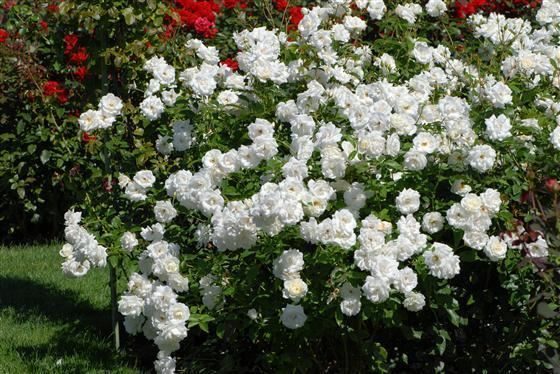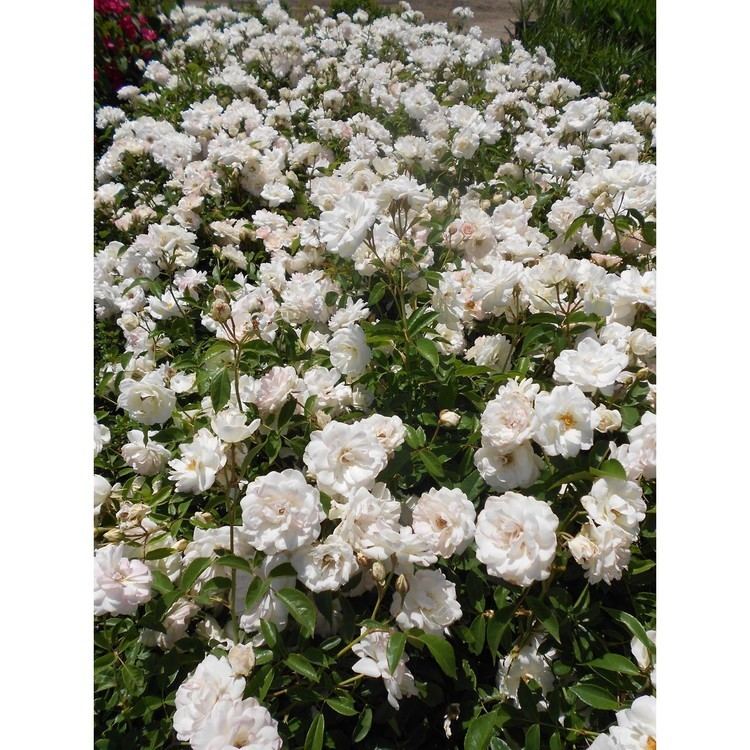Genus Rosa hybrid Cultivar group Floribunda Rank Cultivar | Hybrid parentage 'Robin Hood' x 'Virgo' Scientific name Rosa 'Iceberg' | |
 | ||
Marketing names Iceberg, Fée des Neiges, Schneewittchen Origin Bred by W. Kordes & Sons, Germany, 1958. Similar Rosa 'Climbing Iceberg', Ausmas, Rosa 'Eden', Rosa 'Abraham Darby', Rosa 'New Dawn' | ||
Ficha paisaj stica rosa iceberg
Iceberg is a white floribunda rose cultivar bred by Kordes in Germany in 1958. It is also known as 'KORbin' (the registered cultivar name), Fée des Neiges and Schneewittchen. Iceberg is among the world's best known roses.
Contents
- Ficha paisaj stica rosa iceberg
- Description
- Origin
- Awards and recognition
- Related cultivars
- Cultivation
- References

Description

Iceberg is a modern cluster-flowered floribunda rose cultivar. It is commercially available in two main forms: a bush and a standard, both produced by a form of grafting known as budding. The size and shape of bush forms depend on growing conditions and pruning regime: it is usually about 1.2 metres (3.9 ft) high and 1 metre (3.3 ft) wide, though in hot climates it can reach 2 metres (6.6 ft) high and if lightly pruned can become a graceful shrub. Leaves are small, light green and glossy. Blooms are about 5 cm in diameter and have 25 to 35 petals. They grow in clusters on long stems. Buds are long and pointed. The fragrant flowers usually appear abundantly throughout the year.
Origin

The cultivar was developed by prolific German rose breeder Reimer Kordes in Germany in 1958. He and his father Wilhelm had initially specialised in developing bush roses that were suitable for small gardens. The parent varieties of Iceberg are 'Robin Hood', a red hybrid musk rose, developed by Joseph Pemberton in 1927 in England, and 'Virgo', a white hybrid-tea rose bred in France by Charles Mallerin in 1927.

The plant was registered under the cultivar name 'KORbin' by Kordes in 1958 and given the trade name Schneewittchen. The cultivar is known as Fée des Neiges in French and Iceberg in English.
Awards and recognition

In 1958 Iceberg was awarded a Royal National Rose Society Gold Medal. The cultivar was selected as the "World Favourite Rose" of 1983 by the World Federation of Rose Societies and is listed in their "Rose Hall of Fame". The German ADR title granted in 1960 was taken away in 2004.
Stamps depicting the cultivar were issued in Romania in 1970 and New Zealand in 1975.
Related cultivars
A number of sports of Iceberg have been discovered:
Because of its positive qualities, Iceberg was an important parent of the English Roses bred by David Austin and others: 1983 – 'Graham Thomas' and 'Perdita'; 1984 – 'Belle Story', 'Dove' and 'Heritage'; 1985 – 'Emanuel'; 1986 – 'Claire Rose', 'English Garden' and 'Swan'.
Cultivation
Although plants are generally disease free, they may suffer from black spot in more humid climates or in situations where air circulation is limited. Plants tolerate shade, though they perform best in full sun. In North America they are able to be grown in USDA Hardiness Zones 4b and higher. In Australia, plants are suited to all but northern tropical areas. The hardiness and popularity of the cultivar have seen its widespread use in cultivation across the world, occasionally leading to claims that it is "overdone" as a garden plant.
The blooms are suited for use as cut flowers. Both the shrub form and grafted standard may be grown in large containers.
